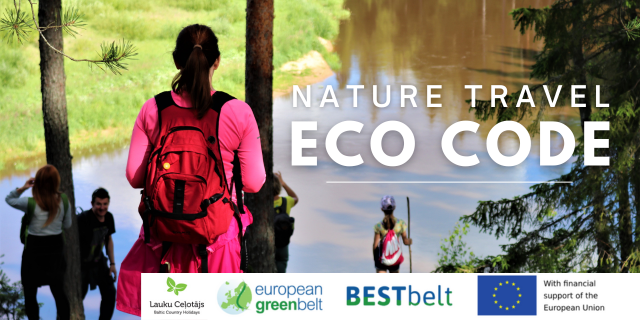Baltic Forest Hiking - data export to KMZ, KML and GPX formats
One of the most frequently asked questions is “How can I use my mobile phone to navigate this trail?”. Although baltictrails.eu can also be used on mobile phones, it is much easier to navigate using one of the dedicated apps. To help you do this, we have created the data download section below, which allows you to export trail segments in formats that can be used in applications. To help you do this, we have created a section on downloading data, which allows you to export trail segments in formats that can be used in applications.
Export formats
Geographic data is exported in the following formats:
- GPX
- The most popular format for exchanging geographic data, but it is limited and only basic trail data can be exported. Read more about the format and how to use it here: Using GPX data.
- KML
-
The format originally used by Google in its popular "Google Earth". This format is now standardised (Open Geospatial Consortium) and has become very popular for working with geographic data, as it allows additional information (descriptions, links, images, etc.) to be included in the data that is not possible in GPX format. This format is currently even more widely supported in various mobile applications than the GPX format.
- KMZ
-
An extended version of the KML format, especially suitable for situations where the internet is not available. It is essentially an archive containing a KML file and then the necessary ancillary files needed to work offline. This format is generally supported by all applications that can work with KML files. If your chosen app or device can do this, then this is the format you should use.
Using exports in mobile apps
"I have no experience with geo-data – which app would you recommend?" s another question that is very often asked. Experienced travellers will have already chosen their favourite app to use when travelling on foot. For those who don't, here are some recommendations for apps we've tried ourselves. All of these applications support the use of KML/KMZ files, but they do not always use all of their features, and the display of information varies.
If you don't want to read the descriptions of the apps and their features below, but want a simple free app - find the "Organic Maps" app on the list and download the version that suits your device. We think it's a very good way to start exploring and trying out the possibilities of navigation software.
| Application | Description |
|---|---|
| Google maps | One of the most popular navigation apps, as it is installed on virtually all devices running the Android platform. Although it is very popular and can be used offline, we do not recommend it for beginners. Unfortunately, using this application with KML/KMZ/GPX data is not easy and cannot be done on the phone. You need to use the “My Maps” option in the web browser version and import the data into the map you have created, before it is available in the mobile version. Switching the map to “offline” mode is also non-trivial. There are other restrictions, such as the number of trail segments, etc. |
| Organic Maps | In our opinion, the easiest and most user-friendly navigation software for importing data. It's free, doesn't use banner ads, supports both Android and Apple devices and lets you import KML/KMZ files as soon as you download them. Support for KML files is not complete (specialised icons for points of interest are not supported), but fully usable and the display of information is user-friendly. Use a downloadable OpenStreetMap map for the region you need for the base map. |
| Maps Me | The navigation app on which Organic Maps is based. Similar functionality, but uses banner ads. To be used if Organic Maps is not available on your device for some reason. |
| Locus Map | The most complete support for KML/KMZ files and a friendly user interface, but the free version includes annoying ad banners and very limited features. The paid version works as a monthly subscription. |
| Gaia GPS | An app specifically designed for travelling on foot. This application requires compulsory registration and the creation of an account on the website, which allows you to save the layouts of the various planned trails. Not recommended for simple hiking, but if you plan to travel on foot regularly, this app is worth considering. It is true that the free version does not have an offline option and the desire to “upgrade” users to the paid version is rather annoying. This class also includes Komoot, Outdooractive, ViewRanger and other apps that position themselves as a platform with access to online trail information. They are not the focus of this list as they require registration and are often not easy to use. |
| Google Earth | The application that originally created the KML/KMZ file formats. This app (especially the web version) can be recommended if you want to add additional points of interest and other information to the downloaded trail file.. |
Read more about using GPX files here:











